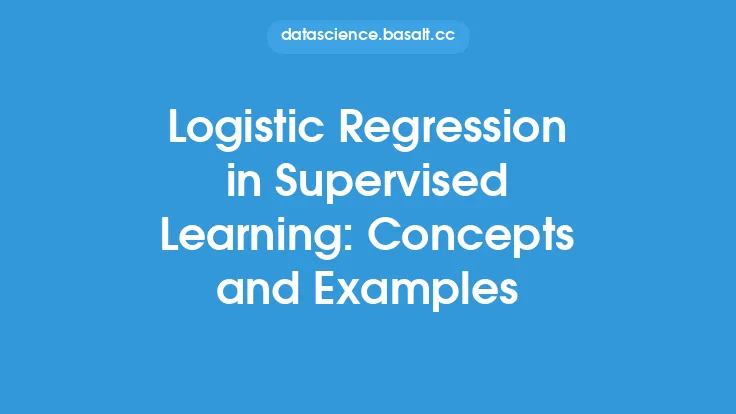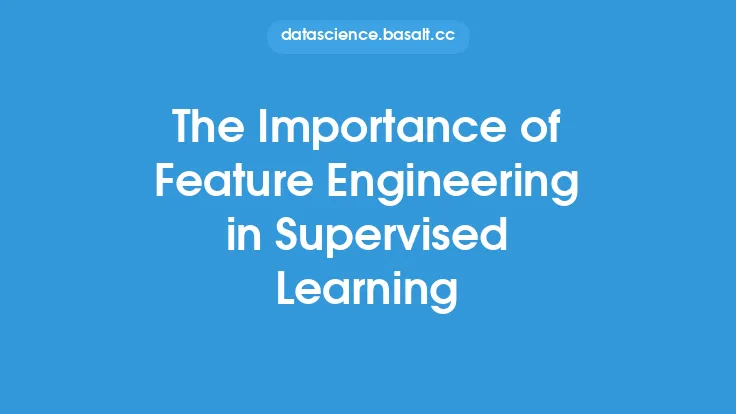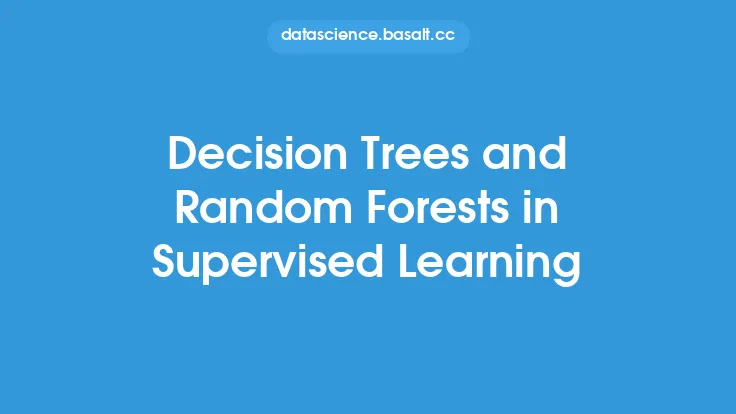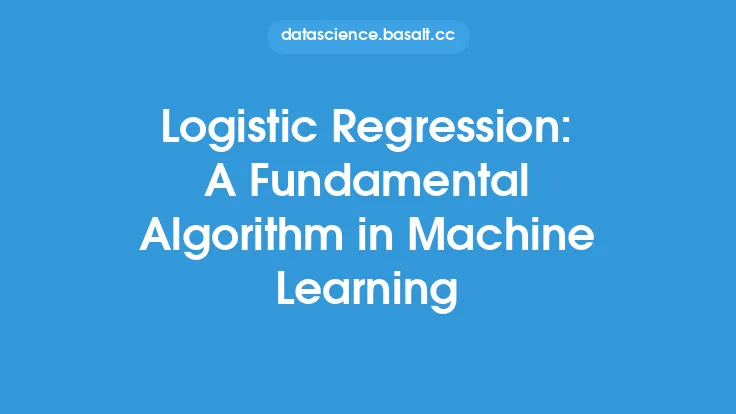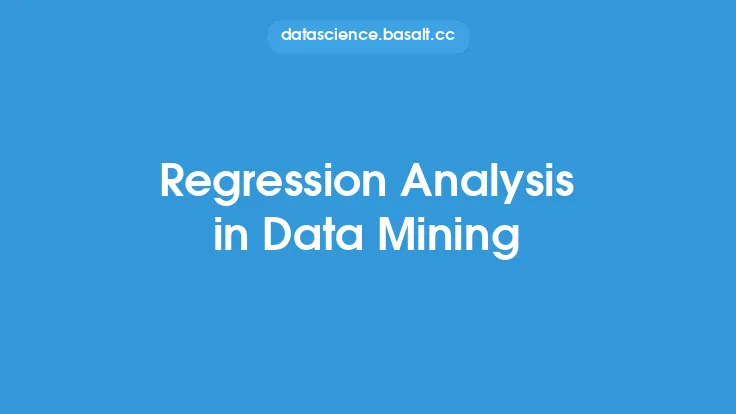Regression analysis is a fundamental concept in supervised learning, which is a subset of machine learning. It involves the use of statistical models to establish a relationship between a dependent variable (target variable) and one or more independent variables (predictor variables). The primary goal of regression analysis is to create a mathematical model that can predict the value of the target variable based on the values of the predictor variables.
Introduction to Regression Analysis
Regression analysis is a widely used technique in data analysis and machine learning. It is used to model the relationship between a dependent variable and one or more independent variables. The dependent variable is the variable that we are trying to predict, while the independent variables are the variables that we use to make the prediction. Regression analysis can be used for a variety of purposes, including predicting continuous outcomes, identifying relationships between variables, and forecasting future trends.
Types of Regression Analysis
There are several types of regression analysis, including:
- Simple Linear Regression: This is the simplest form of regression analysis, where a single independent variable is used to predict the value of the dependent variable.
- Multiple Linear Regression: This type of regression analysis involves the use of multiple independent variables to predict the value of the dependent variable.
- Polynomial Regression: This type of regression analysis involves the use of polynomial equations to model the relationship between the independent and dependent variables.
- Logistic Regression: This type of regression analysis is used to model binary outcomes, where the dependent variable can take on only two possible values.
- Ridge Regression: This type of regression analysis is used to reduce the impact of multicollinearity, where the independent variables are highly correlated with each other.
- Lasso Regression: This type of regression analysis is used to select the most important independent variables and reduce the impact of multicollinearity.
Assumptions of Regression Analysis
Regression analysis is based on several assumptions, including:
- Linearity: The relationship between the independent and dependent variables should be linear.
- Independence: Each observation should be independent of the others.
- Homoscedasticity: The variance of the residuals should be constant across all levels of the independent variables.
- Normality: The residuals should be normally distributed.
- No multicollinearity: The independent variables should not be highly correlated with each other.
- No autocorrelation: The residuals should not be correlated with each other.
Evaluation Metrics for Regression Analysis
There are several evaluation metrics that can be used to assess the performance of a regression model, including:
- Mean Squared Error (MSE): This metric measures the average squared difference between the predicted and actual values of the dependent variable.
- Mean Absolute Error (MAE): This metric measures the average absolute difference between the predicted and actual values of the dependent variable.
- Coefficient of Determination (R-squared): This metric measures the proportion of the variance in the dependent variable that is explained by the independent variables.
- Mean Absolute Percentage Error (MAPE): This metric measures the average absolute percentage difference between the predicted and actual values of the dependent variable.
Common Applications of Regression Analysis
Regression analysis has a wide range of applications in various fields, including:
- Predicting stock prices and stock market trends
- Forecasting sales and revenue
- Analyzing the relationship between variables in medical research
- Predicting energy consumption and demand
- Identifying the factors that affect customer churn and retention
Challenges and Limitations of Regression Analysis
Regression analysis is not without its challenges and limitations. Some of the common challenges and limitations include:
- Multicollinearity: When the independent variables are highly correlated with each other, it can lead to unstable estimates of the regression coefficients.
- Overfitting: When the model is too complex and fits the noise in the data, it can lead to poor predictive performance.
- Underfitting: When the model is too simple and fails to capture the underlying relationships in the data, it can lead to poor predictive performance.
- Non-linearity: When the relationship between the independent and dependent variables is non-linear, it can be challenging to model using traditional regression techniques.
Best Practices for Regression Analysis
To get the most out of regression analysis, it is essential to follow best practices, including:
- Data preprocessing: This involves cleaning, transforming, and scaling the data to ensure that it is in a suitable format for analysis.
- Feature selection: This involves selecting the most relevant independent variables to include in the model.
- Model selection: This involves selecting the most appropriate type of regression model based on the characteristics of the data.
- Model evaluation: This involves evaluating the performance of the model using metrics such as MSE, MAE, and R-squared.
- Model interpretation: This involves interpreting the results of the model, including the regression coefficients and the predicted values.
Future Directions for Regression Analysis
Regression analysis is a constantly evolving field, with new techniques and methods being developed all the time. Some of the future directions for regression analysis include:
- The use of machine learning algorithms, such as neural networks and decision trees, to improve the accuracy and robustness of regression models.
- The use of big data and data mining techniques to analyze large datasets and identify patterns and relationships.
- The development of new evaluation metrics and model selection techniques to improve the performance and reliability of regression models.
- The application of regression analysis to new and emerging fields, such as finance, healthcare, and environmental science.
